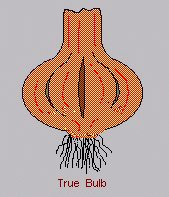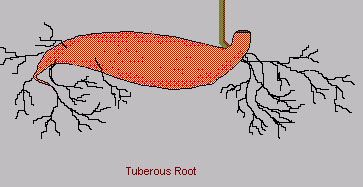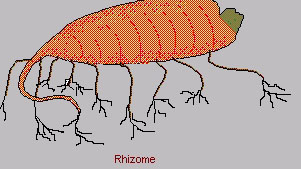Home
Our Loft
Quilts, Gifts, Decorating, Restin' & Relaxin', Pampering
Craftin' Room
Crafts for the
Kid in all of us
Special Occasions
Kids Fun Stuff
Heart of our Home
Recipes, Crafts, Cookbooks, Tips,
Readin' Room
Craft Books, Antiques and Collectibles, Gardening and more
From the Porch
Gardening
Helpful Tips
Products
Helpful & Handy Tips
Kitchen, Outside Help, Individual Items
General Store
Home and Garden Products
Special Occasions
Crafts & Gifts
About Us Folks
E-Mail
Links
Contact Info
Comfy Country Creations
P.O. Box 10181,
Airdrie, Alberta
T4A 0H5
Phone: 403-912-2645
Fax: 403-912-0543
|
|
Quick Jump to Related pages
Playing in the Dirt
Container Gardening
What are Bulbs
Bulbs to Purchase
Seed & Plant Kits
What are bulbs?
Spring and fall are the usual seasons we talk about bulbs. When you hear the word bulb, in terms
of gardening, most people think of something in the shape of a tulip bulb. While there are several plants that
make a start from this shape of bulb, there are several other shapes that are considered part of the bulb family.
 Daffodils, Hyacinth, Lily, Tulips and Onions are what are called True Bulbs. A true bulb is thought
to be a complete or nearly complete miniature of a plant that is enclosed in fleshy leaves called scales, which
contain a provision of reserve food. If you were to cut a Hyacinth bulb in half (bud to root) it is most interesting to
see that the flower is housed there, waiting to emerge into our world. Wrapped around a bulb is a thin outside covering
called a tunic. These are like flakey leaves. The basil plate which is located at the base of the bulb holds the
food storing scales together, and new roots will sprout from the outside edge of the basil plate once the bulb ends
its dormant period and begins its growth cycle.
Daffodils, Hyacinth, Lily, Tulips and Onions are what are called True Bulbs. A true bulb is thought
to be a complete or nearly complete miniature of a plant that is enclosed in fleshy leaves called scales, which
contain a provision of reserve food. If you were to cut a Hyacinth bulb in half (bud to root) it is most interesting to
see that the flower is housed there, waiting to emerge into our world. Wrapped around a bulb is a thin outside covering
called a tunic. These are like flakey leaves. The basil plate which is located at the base of the bulb holds the
food storing scales together, and new roots will sprout from the outside edge of the basil plate once the bulb ends
its dormant period and begins its growth cycle.
 Gladiolus, Crocus, Acidanthera and Freesia fall under the category of Corms. The corm is the base of a
stem that becomes swollen, and solid, with food for it to live on. It is usually covered by a type of tunic, somewhat like that
which covers the bulb and there is a basil plate from which new roots grow. During the growth cycle, the crom's
food reserve is completely depleted. In order to carry on, the crom will develope one or more new croms from
the buds that appear either on the top or beside the old one.
Gladiolus, Crocus, Acidanthera and Freesia fall under the category of Corms. The corm is the base of a
stem that becomes swollen, and solid, with food for it to live on. It is usually covered by a type of tunic, somewhat like that
which covers the bulb and there is a basil plate from which new roots grow. During the growth cycle, the crom's
food reserve is completely depleted. In order to carry on, the crom will develope one or more new croms from
the buds that appear either on the top or beside the old one.
 Tubers have rough skin and produce roots from many parts of its surface. New plants come to life
from eyes or growth buds from this short, fat, bumpy exterior. Anemone, Aladium, Gloxinia and Tuberous
Begonia all belong to the tuber family. To reproduce, Begonias grow larger and produce growth buds while
Caladium grow new tubers from the sides of the original.
Tubers have rough skin and produce roots from many parts of its surface. New plants come to life
from eyes or growth buds from this short, fat, bumpy exterior. Anemone, Aladium, Gloxinia and Tuberous
Begonia all belong to the tuber family. To reproduce, Begonias grow larger and produce growth buds while
Caladium grow new tubers from the sides of the original.
Ranunculus and Dahlia are just a few that are part of the Tuberous Root family and in fact are
truly real roots. Their food supply is kept in the root tissue and like tubers, they produce buds from which
new plants grow. The growing area is often called the crown and the buds are restricted to the neck of the
root where they grow on the base of the old stem.
 Lily of the Valley, Canna and Callas all are grown from Rhizomes. A rhizome is a thick stem or
rootstock that grows horizontally along or below the soil surface and every so often on the top or side of the
rhizome, it sends stems above ground. Stems that have buds with scalelike leaves. Lily of the Valley send
up "pips", small upright detachable growths that have their own roots, are detachable and can be stored
for later planting.
Lily of the Valley, Canna and Callas all are grown from Rhizomes. A rhizome is a thick stem or
rootstock that grows horizontally along or below the soil surface and every so often on the top or side of the
rhizome, it sends stems above ground. Stems that have buds with scalelike leaves. Lily of the Valley send
up "pips", small upright detachable growths that have their own roots, are detachable and can be stored
for later planting.
NOTE: Graphics are GrowIt Gold (tm)Copyright (c) 1990-2002, Brian Rondel, Innovative Thinking
Software, All Rights Reserved.
Quick Jump to Related Pages
Playing in the Dirt
Container Gardening
What are Bulbs
Bulbs to Purchase
Seed & Plant Kits
Browse all our Home & Garden Accent Pages
Gardening
|